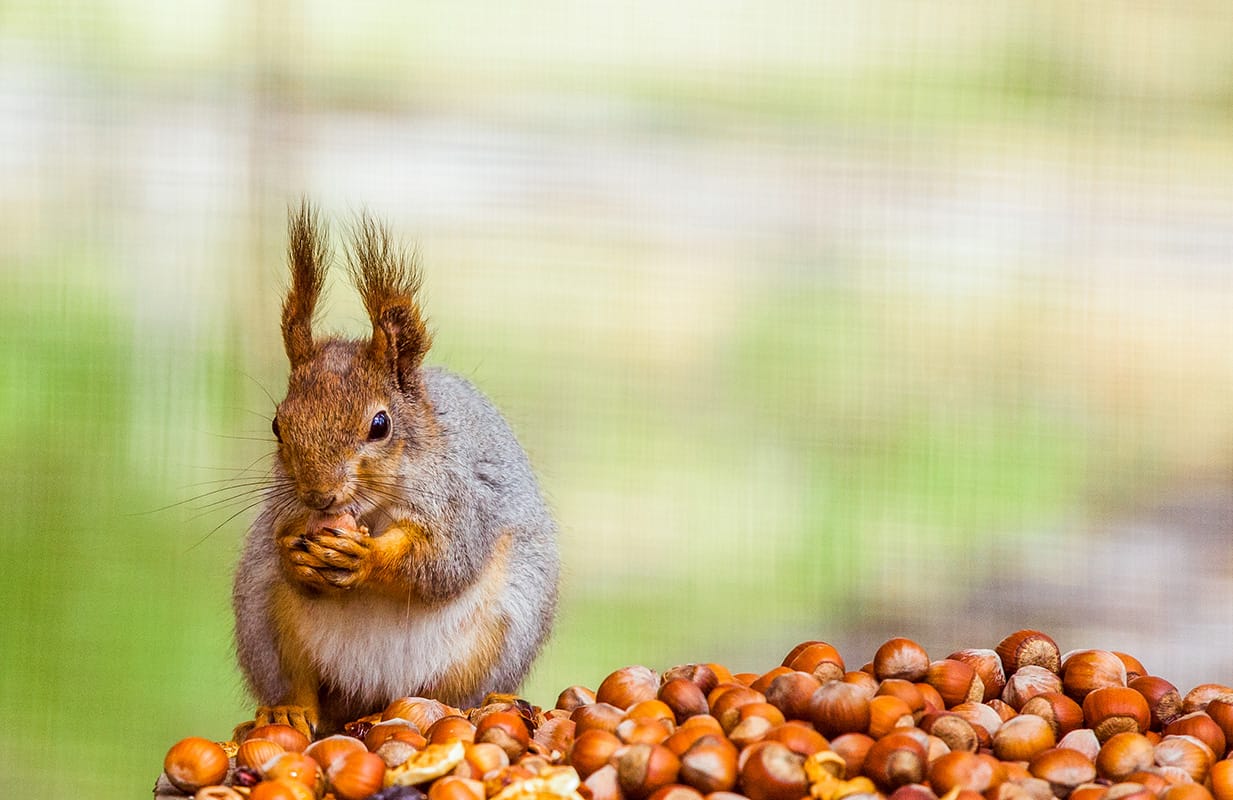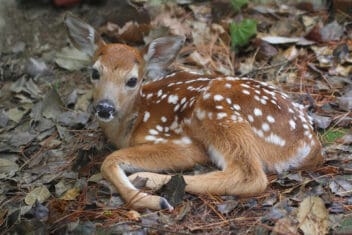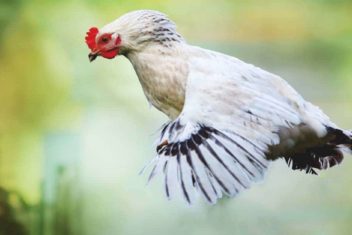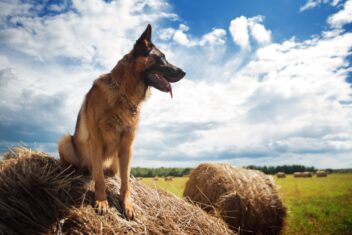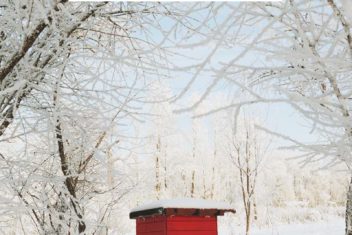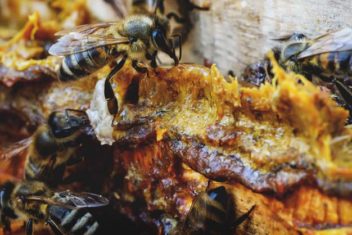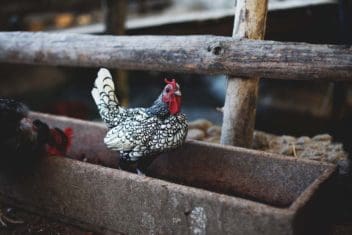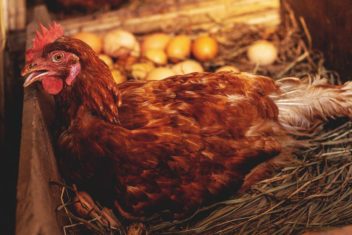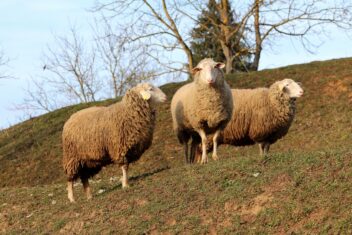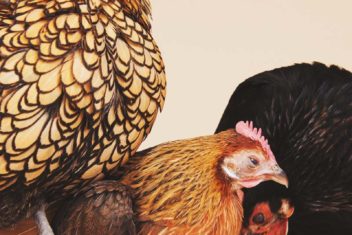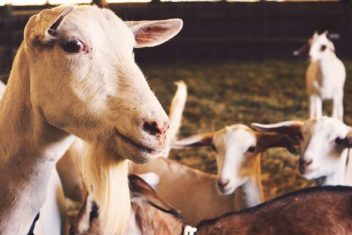As winter hits, you might be wondering how you can go about feeding the wildlife in your neck of the woods.
It’s easy for birds, deer, and squirrels to find food in the summer when there are abundant fruits, veggies, and foliage out there. But when the winter rolls around, wildlife has a bigger challenge finding food.
Here’s how – and when – to lend a helping hand to the animals in your neighborhood.
Why Feed Wildlife
There are many reasons to feed wildlife in the winter. The primary reason is to help them survive the cold weather and to remain healthy.
Since human development has destroyed much of the natural resources that wildlife relies on, feeding them is trying to right a wrong.
Feeding wildlife in the winter also brings us joy and appreciation of the natural world. If you set up a feeding station for birds and squirrels outside a window, your family will get to watch their antics as they navigate the dormant season.
In addition, it’s a great learning opportunity for young members of your family.
When Not To Feed Wildlife
There are reasons not to feed wildlife. The most common one is that you can encourage habituation. This means the animal gets used to people and are no longer afraid.
An animal who becomes habituated can cause some safety issues. For instance, a young buck fawn who is used to getting treats from their human friends grows into a four hundred pound buck with raging hormones and a very pushy attitude. At this point, he can be quite dangerous.
In a less severe case, you may feed a young raccoon who later thinks trash can diving and getting under your house to pull out insulation is high sport.
Always use caution when feeding wildlife that they aren’t becoming dependent or too familiar with you. That means maintaining a safe distance and placing your food in a place that doesn’t encourage them to hang out in your house or outbuildings.
Keep reading to learn some natural ways you can help wildlife in the winter without feeding them.
Know Your Local Laws
In addition to habituation, some states have laws about feeding game animals such as deer and wild turkeys. They have these laws to discourage baiting wildlife.
Baiting occurs when hunters out foods to attract animals to a specific location and make them easier to shoot. This is illegal in many states.
Feeding Birds
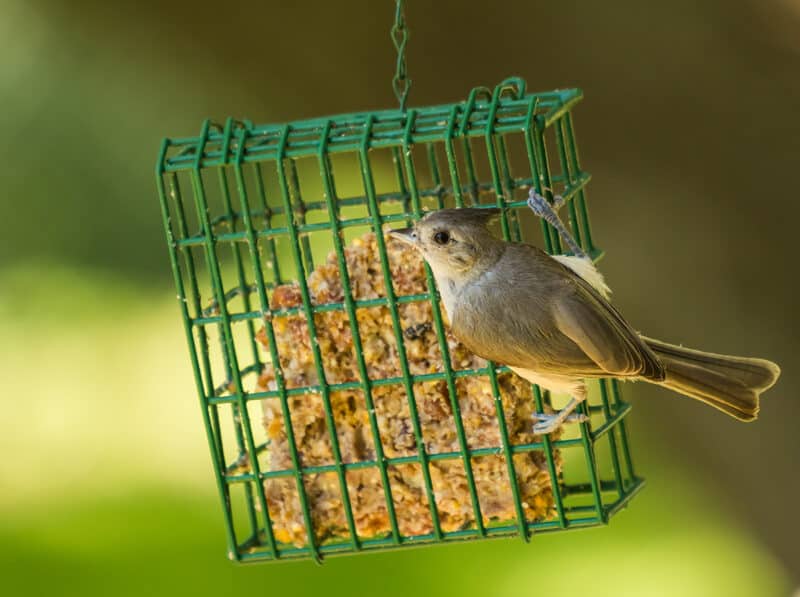
Birds are probably the easiest animals to try feeding, whether it’s winter, summer, fall or spring. Setting up a couple of bird feeders outside your windows can draw all types of birds and give you hours of enjoyment.
Find out what species stay in your area over winter and what they eat. Some birds eat seeds, some insects, and some, like hummingbirds, drink nectar. It’s important to offer the right types of foods in feeders that are assessable to the bird.
Try the small, inexpensive cage-like feeders designed to hold suet cakes. Birds such as woodpeckers, cardinals, and flickers will grab hold of the cage wires with their feet and eat the suet – often upside down.
Finding a good area to place your bird feeders is important. You want to discourage window strikes. Window strikes happen when the bird gets confused by the reflection of the outdoors on the glass, flies into the window, and is killed or injured.
To prevent window strikes, locate your bird feeders and baths close to the house. Within three feet is best because then the birds are too close for a collision to cause death.
Alternatively, you can place your feeders out in the yard at least 30 feet from the house. This way the birds are more likely to recognize that windows as a part of the house and not fly into them.
Feeding Squirrels
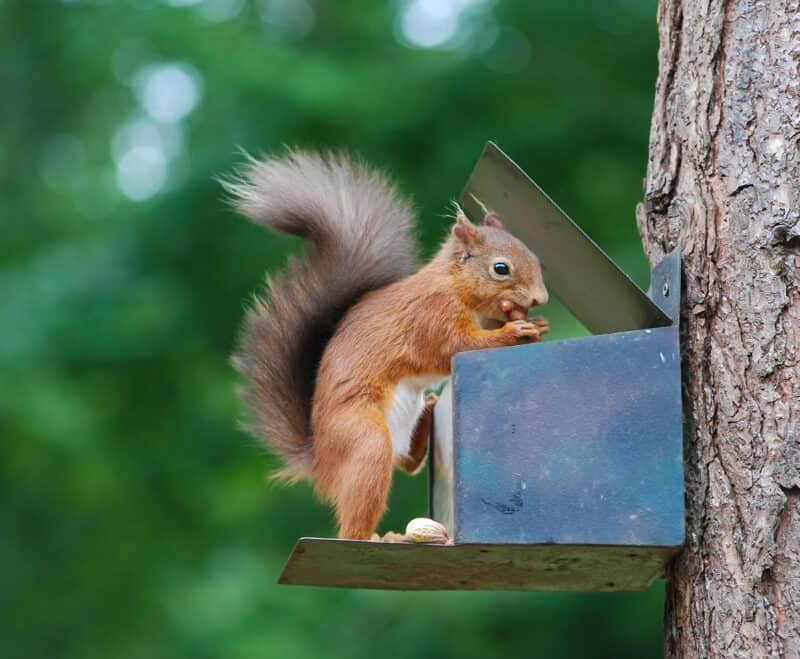
If you are feeding birds and other wildlife in the winter, then you are feeding squirrels! These rascally rodents are clever and persistent. Keeping them out of your bird feeders can be a challenge.
Squirrels don’t hibernate in winter but rather experience torpor. Torpor is more of a deep nap. Squirrels get up in winter and scurry around gathering food from their caches – and of course your feeders!
The answer is to give them their own easy-to-access feeding station with corn and larger nuts. Then use squirrel proof feeders for your birds.
It’s fun to observe and see if the squirrels eat at the feeder or just grab the food and run.
Squirrels eat nuts, seeds, corn, most vegetables and fruits, and grains.
How to Feed Rabbits
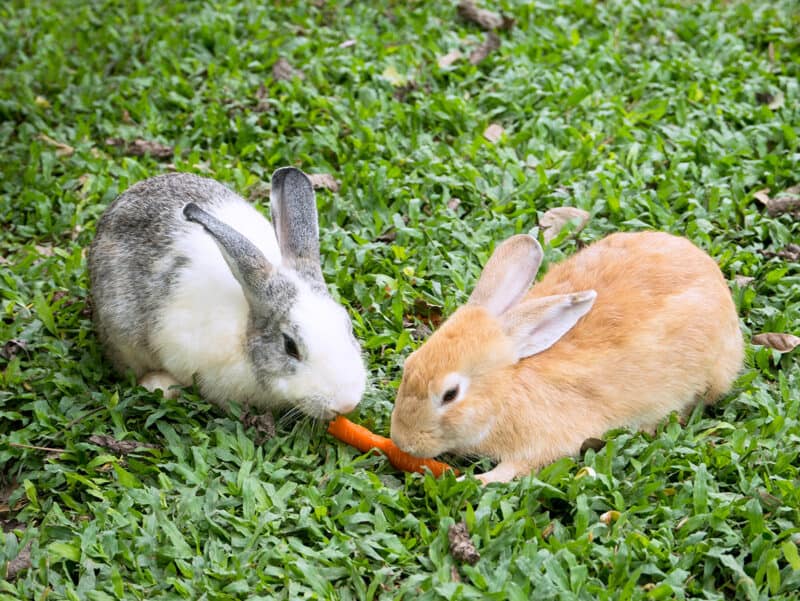
Rabbits need a protected area to feel comfortable eating. A brush pile or landscaping bushes can provide a place for them to feel like they can hunker down for a meal.
Place small twigs and branches out for them from trees like apple, hawthorn, ash, hazel, poplar, spruce, and willows. Root crops like carrots, beets, and turnips are good, too. If your winter is particularly snowy you can put out some hay for them.
Feeding Deer
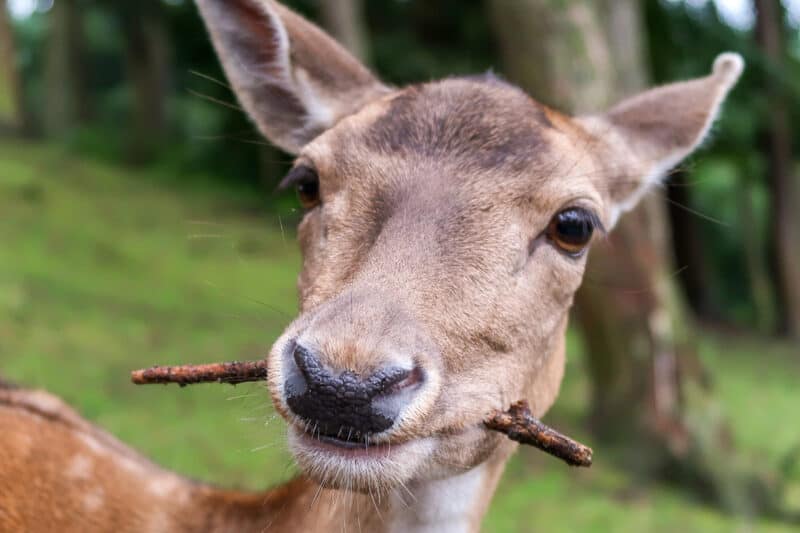
Deer can be a joy to watch. However, if you feed the deer, there are two important things to remember. First, feed them an appropriate diet, and second, put the food in a remote location.
Many feed stores sell corn meant for feeding deer, but corn and other grains are not the ideal food for wildlife. They often overeat the grain which causes bloat. This can cause severe abdominal distress and even death.
Better foods for deer include apples, carrots, and turnips. If you are trimming tall trees, you can pile up limbs from beech, birch, and wild roses. The deer enjoy eating the bark and leaves.
Deer also appreciate hay. Putting out a few flakes now and then provides them with fiber and carbs to get warm.
Given their size, antlers, and long legs, it’s best to give deer plenty of room. Don’t feed the deer next to your house or in your yard. Find a more remote area in a wooded or overgrown location that will be safer for you and the deer.
As a wildlife rehabilitator, I often get calls from distressed residents that have had a doe plant her baby close to their house – even on the porch.
In reality, the fawns are fine and give mom 24 hours to move junior. Deer don’t mind being up close and personal, but resist the temptation to put food for the baby close to your house. Trust mom to handle the situation.
Should I Feed Foxes and Coyotes?
I don’t recommend feeding carnivores unless there is a health issue. Feeding foxes and coyotes brings them into close proximity with humans and can endanger both parties.
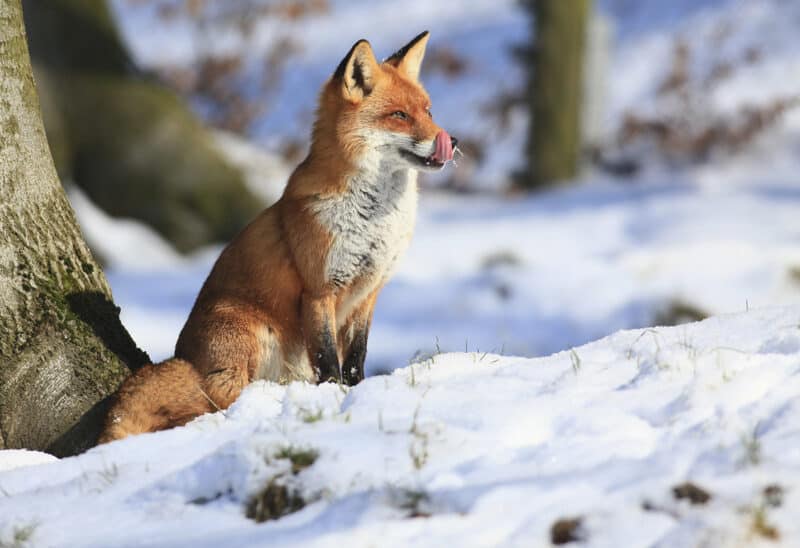
That said, it’s common in our modern world to see both of these species in urban areas.
You may see foxes or coyotes that are thin, look ill, or have a skin disease called mange. The best thing to do is to call a local wildlife rehabilitator. They can advise you on what to do to help the animal or have a wildlife officer check on them.
You can find a wildlife rehabilitator in the USA by using the Animal Help Now App on your computer or phone.
Three Tips For a Backyard Wildlife Habitat
So you ‘re helping wildlife by feeding some supplemental foods in winter. However, wildlife need two more important things: water and shelter.
Food, water, and shelter are considered the essential things to survive for all living species.
Provide Water
Water, which is essential for wildlife, can be hard to find at certain times of the year. In winter it many be frozen and in summer it may be all dried up.
When you plan your feeding station make sure you add a water feature. A birdbath may serve as a source of water and cleanliness. Don’t be surprised if your birds dive in for a bath when there’s snow on the ground. Cleaning and preening their feathers is actually important for them to keep warm.
A large flat bowl that is sunken into the ground can provide water for mid-sized animals such as raccoons and possums. Don’t have the depth over three inches so that it is safe for smaller animals.
You can place the dish on the ground or better yet dig a small hole to place it in. The earth will help insulate it. The rubber feeders found at farm stores are great for this.
The rubber is flexible and won’t crack in the cold weather. We literally turn ours over and stomp on them to remove dirty water or any ice.
Give Them Shelter
Shelter is also important. One simple thing that anyone can do is to hang up bird houses. You can find bird houses in many different shapes and styles as well as bat houses and cavity nests for squirrels.
Just as with feeders, your animal friends are going to want specific houses. Know what bird you are helping and what style home they prefer. Some species will only use bird houses during nesting season.
If you live on a farm you may already have areas of brush or woods that make a good shelter.
Remember to leave some older trees in your woodlot. These provide homes for many animal species. These trees are the ones that grow edible mushrooms – a treat for you and the wildlife.
Are you trimming bushes and trees to manage your landscape? Instead of sending those branches through the chipper, you can make a brush pile in the back of your property. A brush pike provides shelter for many small animals.
Plant Native Species
As a gardener, you enjoy planting things that feed your family. Planting native plant species can do the same for animals. Native varieties provide healthy natural foods for feeding wildlife during the winter.
Plant flowers and trees that produce seeds, berries, and nuts. Oaks, hickory, pawpaws, sumac (the tree not the weed), and blackberries are all common in my area.
